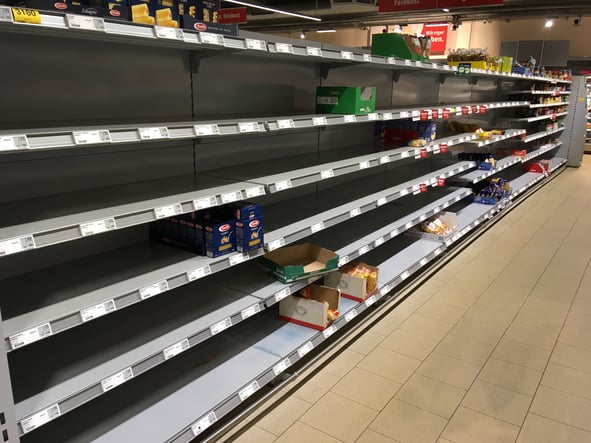Do you know how understaffed retail stores impact the performance of your top SKUs?
Employers around the world are well aware of the ongoing labor and supply chain shortages impacting just about every industry for months on end, but few industries have been impacted as much as CPG, as the global economy continues to recover from the pandemic job loss. According to the Consumer Brands Association, the CPG industry added nearly 12,000 jobs in November, a big jump from the 6,400 jobs added in October, but there’s still plenty of room for growth as more than 130,000 remain open.
The ability for retailers around the world to keep shelves stocked and meet planograms as agreed upon is incredibly at risk during these times, and brands are feeling the pains of these understaffed retail stores during the holiday season. When you’re dealing with this type of challenge and can see that a retailer’s sales on your SKUs are not where they were last year, one of your primary assumptions is likely that they’re no longer able to execute as planned because of their staffing shortages.
Learn how understaffing affects retail stores.

However, here’s where your field team can step in to save the day, and the SKU. Even though a brand may have agreements in place with retailers to meet compliance requirements, when a store is understaffed, some things just may get put on the backburner or even missed completely. Winnings brands know that by equipping their field teams with store-level data and insights, they can easily pick up the slack in potentially unreliable stores that show underperforming products.
4 Ways Your Field Team Can Offset Understaffed Retailers During the Holidays
-
Field Team Deployment: Nobody is going to care more for your products than your own field team. By leveraging on-shelf availability reports found within your retail execution platform of choice, brands can detect potential opportunities between store visits with point-of-sale reporting and can send reps to the stores where they’ll have the biggest impact.
-
Review Planogram Audits: Your field team’s goals are likely to secure and maintain premium shelf placements, so it’s crucial that the placements they’ve already earned meet compliance standards. With a modern retail execution platform, your field team can instantly review planogram and display execution in all of your accounts. Once an error has been spotted, a field rep can add that location to their route and fix the issue.
-
Replenish Stock from the Backroom: Your field team should have the ability to automatically detect empty shelves in-between store visits. With this data, they can quickly compare reported inventory to inventory on-hand in the store and correct stock-outs, voids, and phantom inventory with SKUs from the backroom.
-
Replenish stock from the store: Once your field rep is on-site at a retailer, if they notice stock is low, after a quick conversation with the store manager, the field rep can place a mobile order to replenish the inventory right from the store.
The hard truth is that regardless of whether your retailers are contractually obligated to meet shelf compliance for your SKUs if they don’t have people on staff to meet demands, your field team will need to step up and fill those gaps. Having a modern retail execution platform will be the difference between having the ability to quickly make intelligent decisions to adapt to changing store conditions, and getting swept up in the headwinds.




